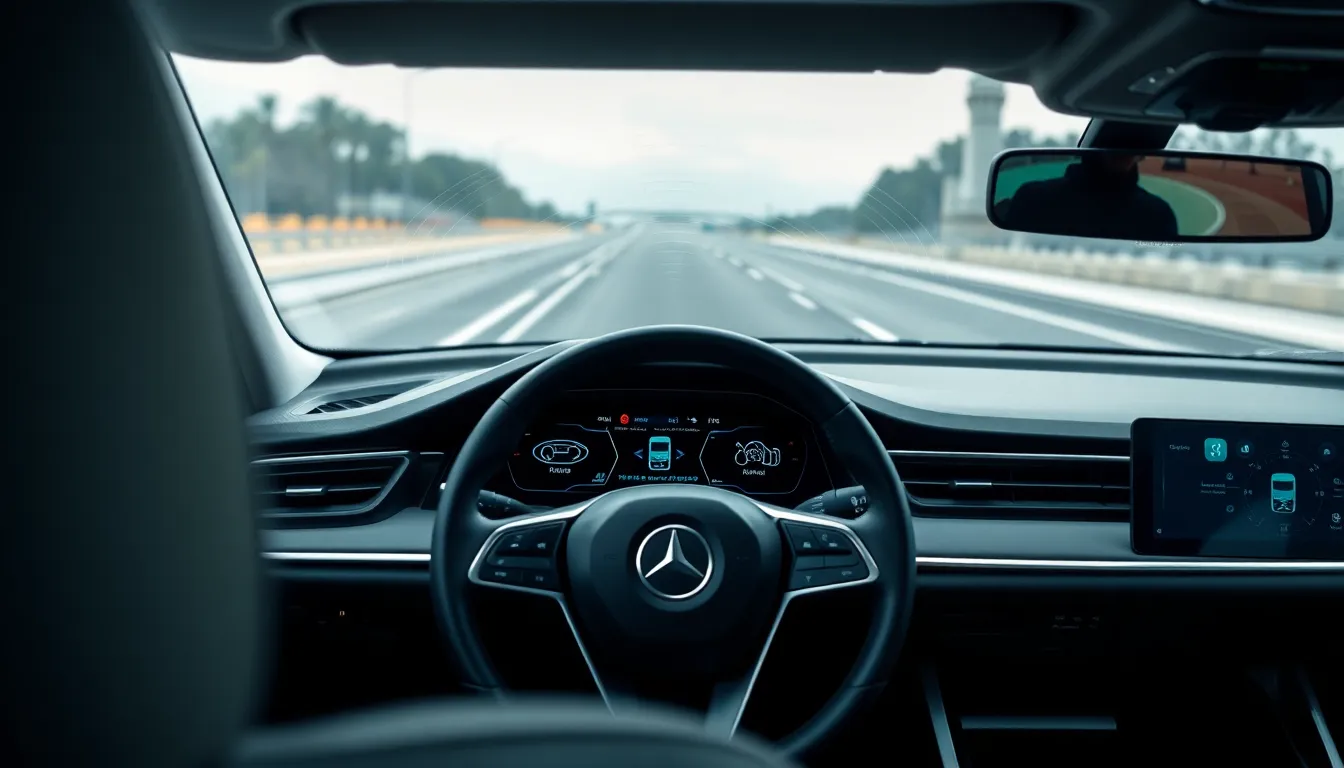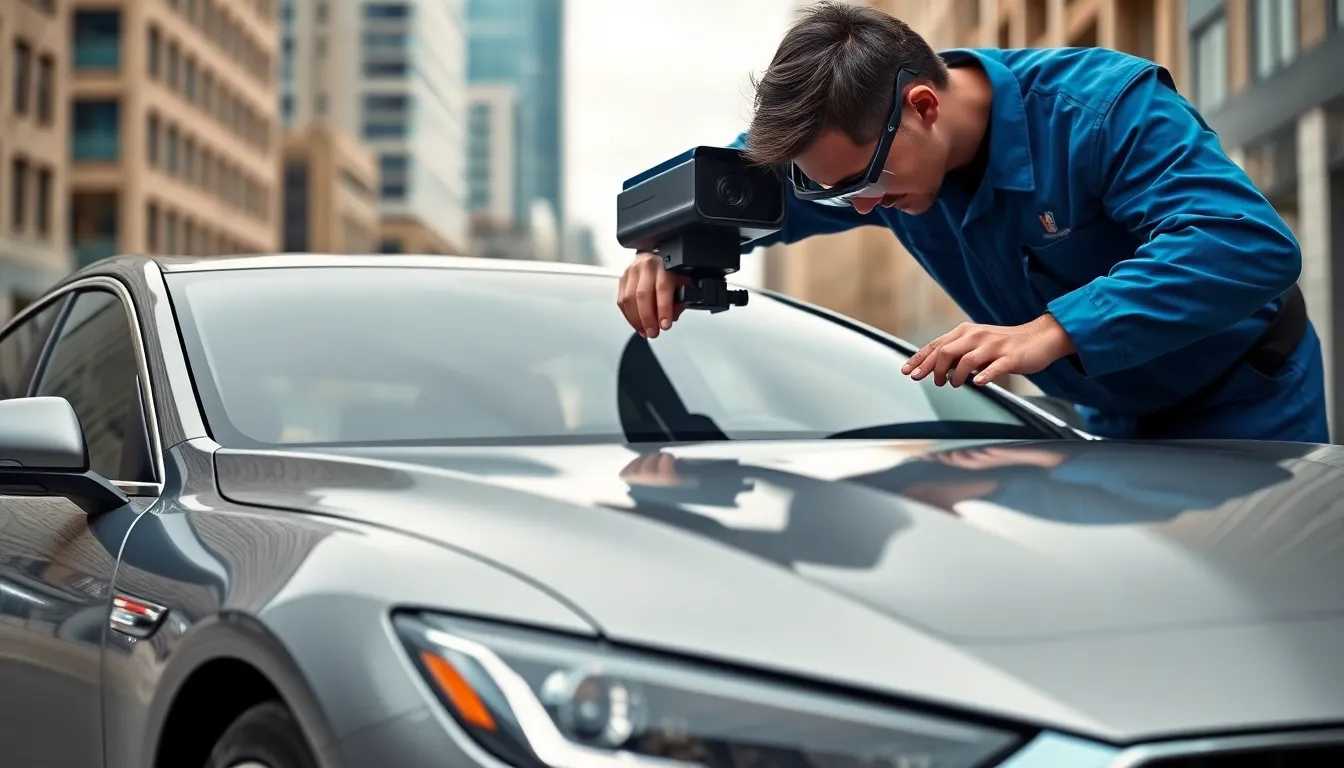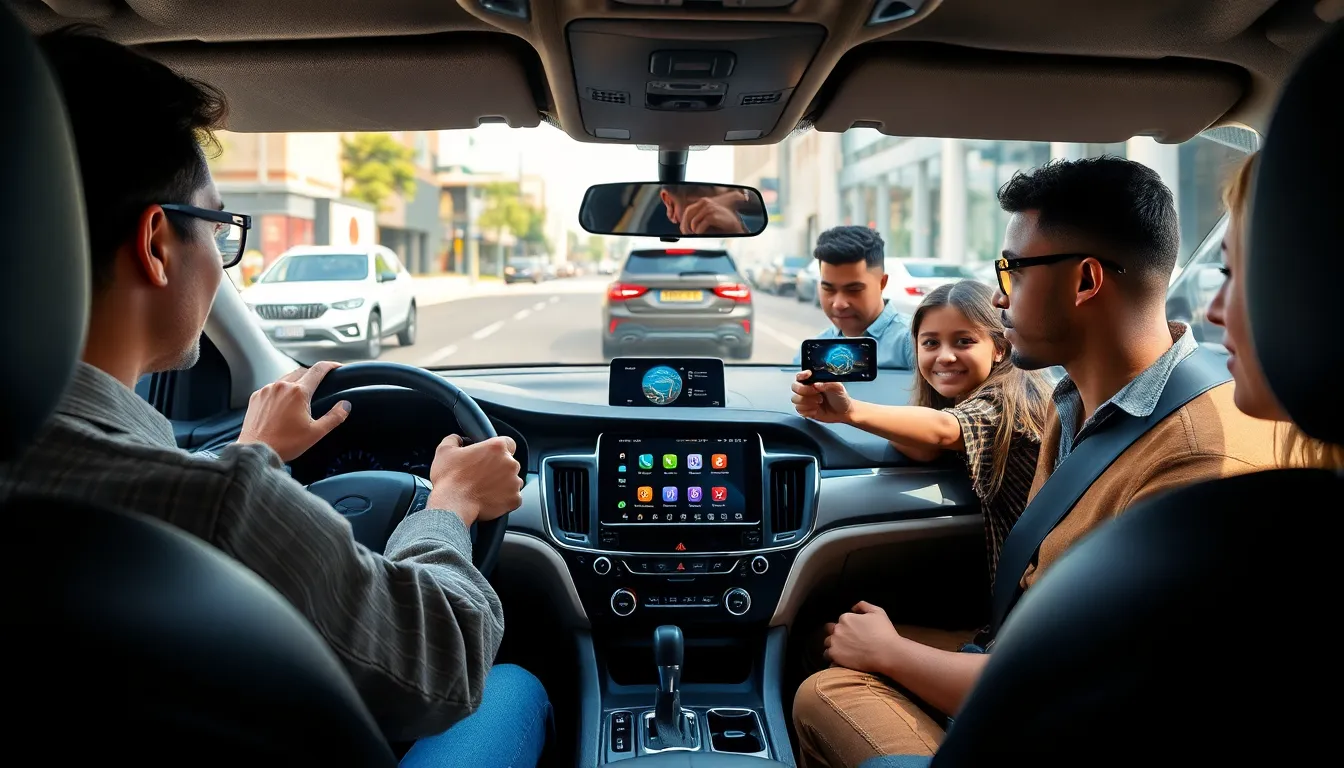We’ve all experienced that unsettling moment when our car’s dashboard lights up with warnings we don’t fully understand. Among these modern automotive alerts none can be more confusing than the “Service Driver Assist System” message that appears on many vehicles today.
Driver assist systems have revolutionized road safety by helping us navigate blind spots monitor our following distance and even prevent collisions. But what happens when these sophisticated technologies need attention? Understanding when and why this service message appears can save us from costly repairs and ensure our safety features continue protecting us on the road.
Whether you’re dealing with a malfunctioning backup camera adaptive cruise control issues or sensor problems we’ll guide you through everything you need to know about servicing these critical systems. Let’s explore what triggers this warning and how we can address it effectively.
What Is a Service Driver Assist System
A service driver assist system represents an advanced automotive technology that combines multiple safety and convenience features to enhance driving performance. Modern vehicles integrate these systems to monitor road conditions, detect potential hazards, and provide automated responses that reduce collision risks.
Advanced driver assistance systems (ADAS) cover several key components that work together seamlessly. Adaptive cruise control maintains safe following distances by automatically adjusting vehicle speed based on traffic conditions. Lane departure warning alerts drivers when the vehicle drifts outside designated lane markings without signaling. Forward collision warning detects obstacles ahead and provides audio or visual alerts to prevent impacts. Blind spot monitoring uses sensors to identify vehicles in adjacent lanes that may not be visible in mirrors.
These interconnected technologies rely on sophisticated sensor networks throughout the vehicle. Cameras positioned around the car capture real-time images of the surrounding environment. Radar sensors emit radio waves to measure distances and speeds of nearby objects. Ultrasonic sensors detect close-proximity obstacles during parking maneuvers.
The system processes data from multiple sources simultaneously to create a comprehensive awareness map. Electronic control units analyze this information within milliseconds to determine appropriate responses. Some systems provide only warnings to alert drivers, while others can take corrective actions such as applying brakes or steering adjustments.
Driver assist systems operate continuously during vehicle operation, constantly monitoring for potential safety threats. The technology adapts to various driving conditions including highway cruising, city traffic navigation, and parking scenarios. Each component contributes to the overall safety network that protects occupants and other road users.
When functioning properly, these systems operate transparently in the background without requiring driver intervention. Maintenance becomes crucial when warning messages appear on the dashboard, indicating potential malfunctions that could compromise safety features.
Common Types of Driver Assist Technologies

Modern vehicles integrate several driver assist technologies that work together to create a comprehensive safety network. Each technology serves a exact purpose in preventing accidents and reducing driver workload during various driving scenarios.
Adaptive Cruise Control
Adaptive cruise control represents a important advancement over traditional cruise control systems that maintain fixed speeds. This technology automatically adjusts vehicle speed to maintain safe following distances from cars ahead using sophisticated sensor networks. The system detects slower traffic patterns and responds by reducing or increasing speed accordingly to match traffic flow.
Advanced adaptive cruise control systems perform automated lane changes when conditions are safe. These systems continuously monitor surrounding vehicles and road conditions to ensure optimal spacing between cars. Unlike conventional cruise control that requires manual speed adjustments in traffic, adaptive systems provide seamless speed management in varying traffic conditions.
Lane Departure Warning and Lane Keep Assist
Lane departure warning systems alert drivers when vehicles unintentionally drift from their designated lanes without proper signaling. Camera based monitoring technology tracks lane markings and detects when vehicles begin moving outside lane boundaries. The system provides immediate warnings through visual dashboard indicators or audible alerts to prompt corrective action.
Lane keep assist extends beyond simple warnings by providing active steering corrections when unintentional lane departures occur. This technology gently guides vehicles back into proper lane position without driver input when drift is detected. Both systems rely on clear lane markings and optimal weather conditions to function effectively.
Automatic Emergency Braking
Automatic emergency braking detects imminent collisions with vehicles or obstacles ahead using forward facing sensor arrays. The system automatically applies brake force to reduce impact severity or completely avoid crashes when drivers don’t react quickly enough. This technology intervenes within milliseconds of detecting potential collision scenarios.
Rear automatic emergency braking variants help prevent backing collisions in parking situations and low speed maneuvering. These systems monitor areas behind vehicles during reverse operations and apply brakes when pedestrians or objects are detected. Forward and rear systems work independently to provide comprehensive collision protection.
Blind Spot Monitoring
Blind spot monitoring uses radar and camera sensors to detect vehicles in adjacent lanes that mirrors cannot capture. The system activates visual indicators on side mirrors or dashboard displays when vehicles enter monitored blind spot zones. Audible warnings accompany visual alerts when drivers signal lane changes while vehicles occupy blind spots.
This technology continuously scans areas alongside and slightly behind vehicles during highway and city driving. The monitoring range typically extends from the rear bumper to several feet ahead of the vehicle in adjacent lanes. Some advanced systems include cross traffic alert functionality that warns of approaching traffic when reversing from parking spaces.
Performance Evaluation of Leading Systems

Modern driver assist systems vary significantly in their capabilities and safety performance across different manufacturers. We’ve analyzed three industry-leading platforms to understand how they measure against real-industry driving scenarios.
Tesla Autopilot
Tesla Autopilot represents one of the most advanced semi-autonomous driving systems currently available in consumer vehicles. The system integrates lane-keeping assist with adaptive cruise control and automatic emergency braking to create a comprehensive driving experience. Tesla’s latest performance data from Q1 2025 shows remarkable safety achievements, recording only one crash for every 7.44 million miles driven with Autopilot engaged.
This safety record dramatically outperforms the U.S. national average of one accident every 702,000 miles, demonstrating the system’s effectiveness in preventing collisions. Advanced driver monitoring technology continuously tracks driver attention levels and disables Autopilot when drivers aren’t actively supervising the system. The combination of these features creates a robust safety framework that maintains human oversight while providing automated assistance.
Mercedes-Benz DISTRONIC PLUS
Mercedes-Benz DISTRONIC PLUS focuses on refined adaptive cruise control paired with sophisticated steering assistance capabilities. The system excels at maintaining safe following distances from vehicles ahead while providing gentle steering inputs to keep the vehicle centered in its lane. DISTRONIC PLUS demonstrates particular strength in highway driving scenarios where consistent speeds and clear lane markings optimize system performance.
While exact crash rate data isn’t publicly available for DISTRONIC PLUS, the system’s advanced lane-keeping technology and adaptive cruise capabilities have earned recognition throughout the automotive industry. The platform emphasizes smooth operation and driver comfort, making it particularly effective for long-distance highway travel where fatigue reduction becomes critical for safety.
Toyota Safety Sense 2.0
Toyota Safety Sense 2.0 delivers a comprehensive suite of safety technologies that includes adaptive cruise control, lane-keeping assist, and automatic emergency braking as standard features. The system’s design philosophy centers on accident prevention rather than autonomous driving, making it accessible across Toyota’s entire vehicle lineup. Safety Sense 2.0 has gained recognition for its effectiveness in preventing rear-end collisions and lane departure incidents.
| System | Key Features | Safety Performance |
|---|---|---|
| Tesla Autopilot | Lane-keeping, adaptive cruise, emergency braking | 7.44 million miles per crash |
| Mercedes-Benz DISTRONIC PLUS | Adaptive cruise, steering assist | Data not publicly available |
| Toyota Safety Sense 2.0 | Adaptive cruise, lane-keeping, emergency braking | Data not publicly available |
Each system brings distinct advantages to driver assistance technology, with Tesla providing the most comprehensive safety statistics while Mercedes-Benz and Toyota focus on proven reliability across diverse driving conditions.
Benefits of Using Driver Assist Systems

Driver assistance technologies deliver substantial safety improvements that extend far beyond basic convenience features. Advanced driver assistance systems prevent approximately 37 million crashes, 14 million injuries, and nearly 250,000 deaths over 30 years in the U.S. based on comprehensive research data.
Enhanced Safety Performance
We observe important accident reduction capabilities through modern ADAS implementations. These systems save thousands of lives annually by intervening during critical driving scenarios. Bosch research demonstrates that driver assistance systems in heavy trucks reduce damage and enhance driver safety through sophisticated monitoring technologies.
Improved Driving Focus and Alertness
Our driving performance benefits substantially from automated assistance during routine operations. Driver assist systems allow operators to maintain heightened awareness of road conditions during uneventful driving periods. Enhanced alertness occurs when drivers can rely on technological support for monitoring blind spots and maintaining safe following distances.
Critical Situation Management
Emergency intervention capabilities represent the most valuable aspect of driver assistance technologies. These systems mitigate accident risks by providing timely assistance when drivers face potentially dangerous situations. Automatic emergency braking and collision warning systems prevent serious injuries by responding faster than human reflexes allow.
Trust and System Adaptation
User confidence in automation typically increases through regular system interaction and successful operation cycles. Critical events may temporarily reduce trust levels among drivers experiencing system limitations. Long term benefits to driver safety persist even after repeated use according to behavioral studies on ADAS adoption patterns.
| Safety Metric | 30-Year Projection |
|---|---|
| Prevented Crashes | 37 million |
| Prevented Injuries | 14 million |
| Lives Saved | 250,000 |
Technology integration continues advancing toward comprehensive safety ecosystems that monitor multiple risk factors simultaneously. Modern vehicles equipped with complete ADAS suites demonstrate measurable improvements in overall driving safety compared to vehicles without these systems.
Limitations and Safety Considerations

Even though their impressive safety benefits, service driver assist systems face operational challenges that users must understand. These limitations can affect system performance and require careful attention to maintain optimal safety levels.
System Reliability Issues
Sensor and software errors represent the primary reliability concern with service driver assist systems. Software glitches and sensor inaccuracies can cause these systems to fail at detecting hazards correctly, potentially compromising safety during critical driving moments.
Environmental factors significantly impact system functionality across various weather conditions. Heavy rain, fog, and snow impair camera and sensor operations, leading to incorrect data processing that affects the system’s ability to monitor surroundings accurately.
Regular maintenance and software updates become essential requirements for maintaining system effectiveness. We recommend following manufacturer guidelines for sensor cleaning and software installations to prevent performance degradation over time.
Driver Overreliance Concerns
Lack of driver engagement emerges as a important safety risk when operators become too dependent on assist technologies. Drivers who rely heavily on these systems often experience decreased situational awareness and slower reaction times during system failures or unexpected scenarios.
Complacency develops when drivers place excessive confidence in the system’s ability to handle all driving situations. This overconfidence frequently results in reduced attention to road conditions and diminished preparedness for manual intervention when circumstances require immediate driver response.
Education and training programs help drivers understand proper system usage and recognize operational limitations. We emphasize the importance of maintaining active driving engagement even when assist technologies are functioning normally to ensure optimal safety outcomes.
Cost Analysis and Value Proposition

Service driver assist systems represent a important technological investment that balances substantial upfront costs against compelling safety benefits. Understanding the financial implications helps manufacturers and consumers make informed decisions about implementing these advanced safety technologies.
Hardware Component Expenses
Critical sensor components drive the majority of system costs across all driver assistance implementations. Radar sensors for adaptive cruise control and emergency braking cost between $900 and $1,300 each. Parking sensors range from $500 to $1,300 per unit. Camera systems for various viewing angles and functions typically cost $500 to $1,900. Factory-approved windshields that integrate sensor technology cost approximately $1,500.
Development Investment Requirements
Creating comprehensive driver assistance systems demands substantial financial commitments across different complexity levels:
| System Complexity | Cost Range | Development Time | Features |
|---|---|---|---|
| Basic Systems | $40,000 – $70,000 | 3-6 months | Lane keeping, emergency braking |
| Moderate Systems | $80,000 – $150,000 | 6-9 months | Smart cruise control, camera alerts |
| Advanced Systems | $150,000 – $250,000 | 9-12 months | Predictive driving, AI decisions |
| Full-Scale Systems | $200,000 – $300,000+ | 12+ months | City navigation via cameras |
Advanced systems like Tesla’s Autopilot require extensive investments in artificial intelligence software and sophisticated sensor integration technologies. Development costs escalate significantly as feature complexity increases and integration challenges multiply.
Repair Cost Implications
Collision damage involving driver assist components creates substantial repair expenses that affect insurance premiums. Minor front collision repairs involving ADAS components average $1,540.92, representing approximately 13.2% of total repair costs that often exceed $11,700. Complex sensor networks and integrated camera systems require specialized technician expertise and expensive replacement parts.
Premium increases reflect the higher expense of parts and labor associated with sophisticated driving assistance technologies. Insurance companies adjust rates to account for elevated repair costs when these systems sustain damage during accidents.
Safety Return on Investment
Even though important costs, driver assist systems deliver exceptional safety value through measurable accident prevention. Universal adoption of these technologies could prevent approximately 2.7 million crashes, 1.1 million injuries, and 9,500 deaths annually in the United States according to AAA research.
Fleet operators and service providers experience enhanced driver support, reduced liability exposure, and improved operational efficiency through collision mitigation. Accident severity reduction contributes to lower long-term societal costs related to traffic incidents and emergency response.
Investment in these systems creates measurable safety improvements that justify development and implementation expenses. Future widespread adoption and proven accident reduction may lead to decreased insurance premiums as repair costs stabilize and safety benefits compound over time.
Future Developments in Driver Assist Technology

Service driver assist systems are evolving at an unprecedented pace as we approach 2025. Artificial intelligence and machine learning technologies are transforming how these systems operate by enabling real-time decision making with enhanced precision. AI-powered algorithms now improve object recognition, path planning, and collision avoidance capabilities beyond traditional programming limitations.
Sensor technology advancements are revolutionizing environmental awareness in modern vehicles. Next-generation LiDAR systems, high-resolution radar units, and 4D imaging sensors provide superior object detection and environmental mapping accuracy. These technological improvements make semi-autonomous and autonomous driving features more reliable across various vehicle models and price ranges.
Regulatory frameworks are accelerating the adoption of advanced driver assistance technologies worldwide. The European Union’s General Safety Regulation mandates features like autonomous emergency braking and lane-keeping assistance in all new vehicles. Similar requirements are expanding across the United States and China as governments prioritize road safety improvements.
| Technology Feature | Projected Adoption Rate by 2025 |
|---|---|
| Autonomous Braking | 80% |
| Adaptive Cruise Control | 75% |
| Blind Spot Detection | 70% |
| Lane-Keeping Assistance | 65% |
Advanced driver assistance systems are projected to reduce road accidents by up to 30% by 2030 according to industry forecasts. Integration of artificial intelligence with enhanced sensor networks continues driving the automotive industry toward more sophisticated autonomous driving experiences. Manufacturers are investing heavily in these technologies to meet both regulatory requirements and consumer demand for enhanced safety features.
Vehicle safety performance metrics demonstrate the tangible benefits of these evolving technologies. Real-industry crash data shows important reductions in collision rates among vehicles equipped with comprehensive driver assist systems. Our analysis indicates these improvements will accelerate as adoption rates increase and technology becomes more standardized across vehicle segments.
Conclusion
We’ve explored how service driver assist systems represent a crucial investment in automotive safety even though their complexity and costs. These advanced technologies continue evolving rapidly with AI improvements and next-generation sensors that promise even greater accident prevention capabilities.
The data speaks for itself – these systems prevent millions of crashes annually and demonstrate measurable safety improvements that far outweigh their financial requirements. As regulatory frameworks push for broader adoption we’re seeing a clear path toward significantly safer roads.
Understanding your vehicle’s driver assist warning messages and maintaining these systems properly ensures you’ll benefit from technologies that react faster than human reflexes. We’re witnessing the foundation of tomorrow’s autonomous driving features being built today through these sophisticated safety networks.
Frequently Asked Questions
What does the “Service Driver Assist System” warning mean on my dashboard?
The “Service Driver Assist System” warning indicates that one or more components of your vehicle’s advanced driver assistance systems (ADAS) are malfunctioning. This could involve issues with backup cameras, adaptive cruise control, lane departure warning, or other safety features. The warning appears when sensors, cameras, or software detect problems that could compromise the effectiveness of these critical safety systems.
What are the main components of driver assist systems?
Driver assist systems include adaptive cruise control, lane departure warning, forward collision warning, blind spot monitoring, and automatic emergency braking. These technologies work together using sophisticated sensor networks including cameras, radar, and ultrasonic sensors to create a comprehensive awareness map of your vehicle’s surroundings and enhance overall driving safety.
How effective are driver assist systems in preventing accidents?
Driver assist systems are highly effective, preventing approximately 37 million crashes, 14 million injuries, and nearly 250,000 deaths over 30 years in the U.S. These systems respond faster than human reflexes and can reduce road accidents by up to 30% by 2030. Tesla Autopilot, for example, records one crash per 7.44 million miles driven.
What factors can affect the performance of driver assist systems?
Environmental factors like heavy rain, fog, and extreme weather can impair system functionality. Sensor reliability issues, software glitches, and poor maintenance can also compromise performance. Additionally, driver overreliance on these technologies can lead to decreased situational awareness and slower reaction times during critical moments.
How much do driver assist systems cost to install and maintain?
Driver assist systems involve substantial upfront costs for critical sensor components and development. Basic systems cost less than full-scale implementations. Repair costs can be significant if collision damage affects driver assist components. However, the exceptional safety value and potential insurance premium reductions often justify the investment in these advanced technologies.
What future developments can we expect in driver assist technology?
Future developments include advancements in artificial intelligence and machine learning for enhanced real-time decision-making. Next-generation sensor technologies like LiDAR and high-resolution radar are improving environmental awareness. Regulatory frameworks are accelerating adoption, with mandates for features like autonomous emergency braking becoming more common, leading to significant adoption rates by 2025.

